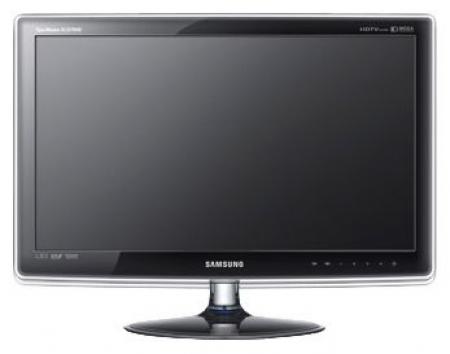Back to School Guide 2010: Take a screen that does double duty as monitor and HDTV

College has changed a lot in the 20+ years since I matriculated, in the days when I had a tiny tube TV with rabbit ears and my small computer display was built into an early Mac. Now dorms are wired for cable for students' HDTVs, and MacBooks have bigger screens than I could dream of in the late '80s.
One thing that hasn't changed much is the amount of room you'll be sharing with a roommate (or roommates) in those dorms. Such cramped quarters lead to ingenious design decisions like using the floor as a hamper. There's usually not space for a giant TV, though they'll doubtless be many attempts to squeeze one into an area that can barely handle a microfridge.
Here's a space-saving solution, especially if you need a monitor for your desktop (or just want a bigger screen to use your laptop on when you're not out and about): a display that can work as both a LCD monitor and an HDTV. There are a few computer displays out there that come with built-in TV tuners, and they're priced less than separately buying a TV and monitor.
In particular, three companies are responsible for newer TV-friendly monitors: Acer, LG, and Samsung. A quick scan of Newegg.com shows that none of these costs more than $400, and you can get smaller screens for close to $200. For basic over-the-air signals, including broadcast networks' HD channels, you should look for a model with an ATSC tuner. If you don't watch a lot of TV, this is an easy solution, especially if you are too busy watching DVDs or playing videogames to care. That's because one of these monitors with HDCP-compliant (for digital rights management purposes) HDMI inputs will let you hook up to a Blu-ray player or an Xbox 360 or PS3.
Acer's 20-inch M200A and 23-inch M230A go one better by including a Clear QAM tuner. With it, you can attach a coaxial cable and, voila, your monitor has cable TV. Here's the bad news: the tuner can only handle unencrypted channels, which usually include over-the-air broadcasts and a few other basic cable channels, but not most digital cable selections.
If you can get a set-top box with your cable setup, you can circumvent the tuner altogether. Those HDCP-compliant HDMI inputs mean that you can connect the box directly to your monitor. That lets you get all the HD and digital channels you want.
There are a couple of other advantages to using one of these LCD monitors as your primary display. Hooking your computer (especially an older laptop) to an HDTV can sometimes cause headaches depending on the resolution support they provide. You don't want to have to use a lower resolution if you can avoid it, especially on a big screen. You'll also find an LED-backlit monitor a bit cheaper than an equivalently sized LED-backlit HDTV. For instance, Samsung's XL2370HD (pictured) comes with built-in ATSC tuner, HDMI input, and LED backlighting for around $250 at Sam's Club. (Vizio's VM230XVT runs $30 to $100 more in comparison.)
So don't dismiss using an LCD monitor as your HDTV in a dorm room environment -- it can deliver the best of both worlds. If anyone uses a monitor with a TV tuner built in and has any advice, please feel free to leave it in the Comments section.
